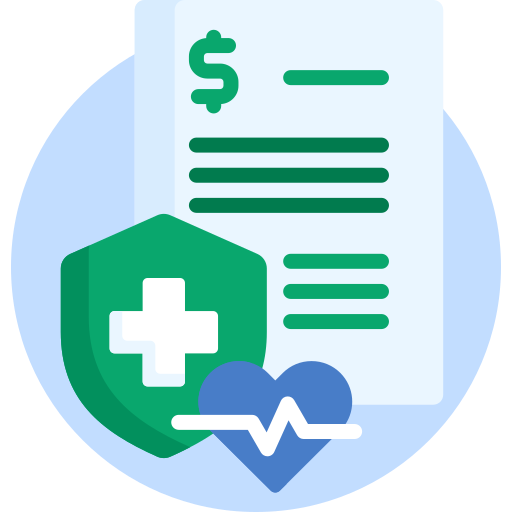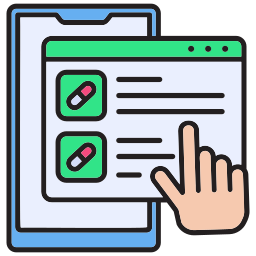The Fast Healthcare Interoperability Resources (FHIR) standard has revolutionized healthcare data exchange, enabling seamless interoperability across electronic health systems. Developed by HL7, FHIR simplifies data sharing through modern, API-driven frameworks, making easier to communicate for healthcare applications, EHRs, and third-party platforms.
As healthcare technology evolves, FHIR versions continue to improve, introducing enhanced security, better data structures, and increased compatibility. Understanding FHIR versioning is essential for healthcare organizations, developers, and IT leaders to maintain compliance, ensure smooth system upgrades, and avoid interoperability issues.
Let's learn more about its past, present, and future.
The Evolution of FHIR Versions: A Look at the Past
FHIR was developed to simplify healthcare data exchange, improving interoperability across EHRs, health systems, and digital health applications. The early versions of FHIR laid the foundation for standardized data exchange, but they also came with challenges and limitations that shaped future advancements.
1️⃣ Trial Use Versions of FHIR
Before becoming a mature standard, FHIR underwent multiple Draft Standards for Trial Use (DSTU), allowing developers and healthcare organizations to test, refine, and contribute to its evolution.
2️⃣ DSTU1: The First Step (2014)
FHIR DSTU1 was the first publicly available version, introducing a modular, API-driven approach to healthcare data exchange. It focused on:
- Defining core resources for patient data, medications, and encounters.
- Providing RESTful APIs to enable seamless integration.
- Encouraging early adopters to explore real-world applications.
However, DSTU1 had limitations, including inconsistent implementations and gaps in resource definitions. Feedback from developers and healthcare organizations highlighted the need for greater standardization and improved data structure.
3️⃣ DSTU2: Expanding Adoption (2015)
FHIR DSTU2 was a significant leap forward, addressing many of DSTU1’s gaps and making it more practical for healthcare adoption. Key improvements included:
- Refined data models for patient records, medications, and observations.
- Better alignment with regulatory requirements such as HIPAA.
- Expanded support for mobile health applications and remote patient monitoring.
DSTU2 saw early adoption by major EHR vendors and health IT companies, but a lack of backward compatibility created challenges for organizations transitioning from DSTU1.
🗝️ Key Lessons from Early FHIR Versions
✔ Interoperability gaps required continuous refinement.
✔ Backward compatibility needed more focus to avoid implementation hurdles.
✔ Developer feedback was essential in shaping a scalable, usable standard.
The lessons learned from DSTU1 and DSTU2 paved the way for FHIR’s evolution, leading to more stable, widely adopted versions like FHIR R4 and R5—setting the stage for the future of healthcare interoperability.
Understanding FHIR Versioning (The Present)
❗ The FHIR Versioning Problem
FHIR is evolving, with new versions introducing enhancements, bug fixes, and expanded functionalities. However, not all healthcare organizations upgrade at the same pace, leading to version fragmentation across the industry. This results in data exchange issues, compatibility gaps, and interoperability challenges between systems using different FHIR versions.
❗ The Challenge of Backward Compatibility
Unlike some standards, FHIR does not always guarantee backward compatibility. Changes in data structures, terminology, and resource definitions mean that newer versions may not work seamlessly with older implementations. This makes it difficult for healthcare providers, developers, and vendors to ensure smooth data exchange without custom integrations or middleware solutions.
📊 Breaking Changes and Their Impact
Breaking changes occur when FHIR updates modify existing resource structures or introduce new constraints, causing compatibility issues in EHRs, APIs, and healthcare applications. These changes impact:
✔ FHIR-based apps that rely on specific data structures
✔ Custom-built healthcare integrations that require version-specific adjustments
✔ Compliance with regulatory requirements when newer FHIR versions become mandatory
✅ How Healthcare Systems Handle Version Issues?
To mitigate FHIR versioning challenges, healthcare organizations adopt strategies such as:
✔ Maintaining multiple FHIR endpoints – Running parallel support for older and newer FHIR versions to ensure compatibility
✔ Using version translation tools – Middleware solutions that convert data between different FHIR versions
✔ Gradual migration approaches – Upgrading systems in stages to prevent disruption in clinical workflows
✔ Working with FHIR-compliant vendors – Partnering with platforms that support multiple FHIR versions and ongoing updates
Normative Versions of FHIR
Introduction to STU3 (Standard for Trial Use 3)
FHIR STU3 (released in 2017) was a significant step forward, expanding FHIR’s data models and workflows. However, it was still classified as "for trial use," meaning it wasn’t fully stable. STU3 was embraced by a large number of EHR manufacturers and healthcare developers, albeit with the knowledge that a more standard, production-ready version will soon replace it.
The Transition from STU3 to FHIR R4
FHIR R4 (released in 2019) became the first normative version, meaning certain core resources were finalized and would no longer change in future updates. It provides a stable foundation for healthcare organizations, developers, and regulatory bodies, ensuring that any FHIR-based implementation would remain functional over time.
Related Read: FHIR Adoption in Healthcare
How Normative Versions Ensure Stability in Healthcare Applications?
FHIR R4’s normative status gives healthcare organizations the confidence to invest in long-term FHIR-based integrations without fearing breaking changes in future releases. Benefits include:
✔ Predictable, stable APIs for healthcare applications
✔ Regulatory bodies adopting FHIR R4 as the compliance standard
✔ Greater interoperability with major EHR systems like Epic EHR, Cerner EHR by Oracle Health, and Athenahealth EHR.
Stable Versions of FHIR
FHIR R4
FHIR R4 is the most widely adopted FHIR version, offering long-term stability, regulatory support, and broad EHR system adoption. It has become the foundation for FHIR-based integrations, data exchange networks, and interoperability frameworks across the healthcare industry.
FHIR R4B
FHIR R4B was introduced as a transitional release, incorporating select FHIR R5 features while maintaining R4’s stability. It allows organizations to gradually adopt new capabilities without fully committing to an early-stage FHIR version.
FHIR R4B helps developers and healthcare systems test R5 elements without disrupting existing R4 implementations.
Related Read: Getting Your Architecture FHIR Ready: A Step-by-Step Guide
Our FHIR Capabilities: How Mindbowser Supports Healthcare Interoperability
HealthConnect CoPilot specializes in FHIR-based integrations, ensuring seamless data exchange across hospitals, payors, and digital health platforms. Our expertise includes:
✔ FHIR Implementation & Version Management – Supporting FHIR R4 with scalable APIs and data structures.
✔ EHR Integration Services – Enabling secure, compliant connectivity with Epic, Cerner, Athenahealth, and other leading EHR platforms.
✔ FHIR-Ready API Development – Building custom FHIR-based APIs for real-time interoperability between healthcare applications.
✔ FHIR Data Mapping & Transformation – We ensure smooth data exchange across HL7 and older FHIR versions to FHIR R4, providing integration solutions.
✔ Regulatory Compliance & Security – Aligning FHIR integrations with HIPAA, GDPR, and HL7 standards, ensuring data privacy and security.
With our expertise in FHIR implementation, healthcare organizations can future-proof their interoperability strategies and stay ahead in the evolving FHIR ecosystem.
Related Read: Epic FHIR Integration: Making Interoperability Seamless for Healthcare Providers
The Future of FHIR: FHIR R5 and Beyond
FHIR continues to evolve, shaping the future of health data exchange. With FHIR R5, the latest iteration, the standard is moving towards greater interoperability, enhanced security, and improved data usability. As healthcare organizations strive for seamless data sharing, understanding the advancements in FHIR versions is critical for ensuring compliance, efficiency, and innovation in health IT systems.
FHIR R5: What’s New and Why It Matters
FHIR R5 brings several key enhancements to improve data exchange, workflow automation, and standardization across healthcare systems. Here’s what makes it a game-changer:
✅ Better Interoperability: Enhanced support for cross-system data sharing, making it easier for EHRs, payors, and third-party applications to connect seamlessly.
✅ Refined Data Standardization: Updated resource structures to improve data accuracy and consistency, ensuring FHIR-based applications can communicate more effectively.
✅ Expanded Security & Compliance Features: Strengthened identity and access management protocols, providing better protection for sensitive patient data.
✅ Advanced Support for AI & Automation: Introduces new workflow features that facilitate AI-driven analytics, automation, and clinical decision support.
FHIR R6: The Next Normative Version
FHIR Release 6 (R6) is currently under development, with its first normative ballot scheduled for 2026.
This version aims to:
✔ Build upon FHIR R5, incorporating real-world feedback
✔ Enhance stability for long-term adoption
✔ Expand support for global interoperability standards
The FHIR Build process ensures that each new version undergoes multiple draft ballots to allow for community input, rigorous testing, and industry-wide consensus before finalization.
Why FHIR R6 Matters?
Healthcare organizations should start preparing for FHIR R6 by:
✔ Assessing current FHIR implementations and identifying areas for improvement
✔ Engaging with the FHIR community to stay ahead of version changes
✔ Ensuring future-proof system architecture for smoother transitions
Expected Improvements in Interoperability and Data Standardization
As FHIR versions continue to evolve, the focus remains on enhancing interoperability and refining data exchange standards to meet the growing demands of healthcare technology. FHIR R6, the anticipated next iteration, aims to optimize resource definitions and expand support for emerging healthcare data exchange needs, ensuring smoother integration across diverse systems.
One of the key goals in FHIR R6 is to improve backward compatibility, minimizing disruptions when upgrading from previous versions. By reducing breaking changes and enhancing resource consistency, healthcare organizations can transition between FHIR versions with greater efficiency and fewer implementation hurdles. These refinements are expected to streamline data exchange, strengthen regulatory compliance, and accelerate adoption across healthcare networks.
Predictions for FHIR R6 and the Role of AI/Automation in Versioning
Managing FHIR versions has always been a challenge, especially as healthcare systems expand their interoperability needs. With the arrival of FHIR R6 on the horizon, the focus is shifting toward automation and AI-driven solutions to streamline the complexities of versioning and implementation.
How AI and Automation Can Simplify FHIR Versioning?
✔ Automated Version Mapping – AI-powered tools can analyze structural differences between FHIR versions, automatically mapping data elements and ensuring smooth transitions across updates.
✔ Intelligent Compatibility Checking – AI can identify breaking changes, deprecated elements, and compatibility risks before upgrades, reducing manual intervention and testing time.
✔ Adaptive Data Transformation – Machine learning algorithms can detect patterns in historical data exchanges and auto-adjust transformation logic when migrating between FHIR versions.
✔ FHIR Governance & Compliance Monitoring – AI-driven automation ensures that data models remain compliant with evolving FHIR standards, keeping healthcare organizations ahead of regulatory shifts.
✔ FHIR Versioning as a Service – Cloud-based AI tools could offer real-time updates and automated compatibility checks, allowing seamless transitions without disrupting clinical workflows.
What to Expect in FHIR R6?
The next FHIR version is expected to enhance standardization, refine data models, and address real-world interoperability challenges. AI-driven solutions will play a pivotal role in reducing the burden of manual updates, ensuring faster adoption, fewer integration roadblocks, and smarter automation for healthcare interoperability.
FHIR's future is more than simply new features and upgrades; it's about making versioning frictionless, scalable, and AI-powered. Healthcare businesses that adopt automation in FHIR version management will gain an advantage in a future of data-driven, interoperable healthcare.
Backward Compatibility & Migration Strategies in FHIR Versions
FHIR is designed to be iterative, with each version improving interoperability, data exchange, and regulatory compliance. However, maintaining backward compatibility remains a challenge. While newer FHIR versions introduce enhancements, they also deprecate older elements or modify data structures, which can create compatibility issues for systems built on earlier versions like DSTU2 or STU3.
FHIR R4 is the first normative version, meaning its core components are stable, ensuring long-term reliability for healthcare organizations. FHIR R5, while still an incremental improvement, introduces refinements that enhance performance, usability, and flexibility. Ensuring compatibility across versions requires strategic planning to avoid data loss, workflow disruptions, or interoperability breakdowns.
Strategies for Upgrading from Older FHIR Versions (DSTU2, STU3) to R4 and R5
✅ Assess Current Implementation: Healthcare organizations must identify dependencies on older FHIR versions, reviewing which resources, extensions, and APIs need upgrading.
✅ Leverage FHIR Version Mapping Tools: Many interoperability platforms provide automated version-mapping services, helping translate DSTU2 or STU3 structures into R4 or R5-compatible formats.
✅ Adopt a Phased Migration Approach: Instead of an immediate full-scale upgrade, organizations can incrementally transition specific modules, ensuring compatibility at every stage.
✅ Use Middleware Solutions: Implementing FHIR translation layers or FHIR gateways helps bridge the gap between older and newer FHIR implementations, enabling progressive upgrades without disrupting workflows.
✅ Validate & Test Thoroughly: Before deployment, rigorous FHIR conformance testing ensures data integrity, security, and compliance, preventing errors in live environments.
Ensuring Seamless Transitions for Healthcare Organizations
✅ Stay Aligned with Industry Standards – ONC, HL7, and CMS guidelines dictate best practices for FHIR adoption and migration. Keeping up with regulatory updates is crucial.
✅ Invest in FHIR-Ready Infrastructure – Cloud-based EHRs, AI-driven data mapping, and interoperability engines simplify FHIR version upgrades.
✅ Train Developers & Clinical Teams – Transitioning to newer FHIR versions isn't just a technical challenge; educating IT teams, clinicians, and decision-makers ensures smoother adoption.
✅ Collaborate with FHIR Experts & Vendors – Working with FHIR-certified vendors or healthcare interoperability consultants minimizes risks and accelerates migration success.
Conclusion
Keeping up with FHIR versions presents challenges, from compatibility issues between different implementations to data exchange inconsistencies. However, solutions like version translation tools, standardized APIs, and backward compatibility measures help mitigate these obstacles, ensuring smoother transitions between updates.
Staying updated with FHIR versions is essential for maintaining interoperability, ensuring regulatory compliance, and optimizing healthcare data exchange. As FHIR continues to evolve, healthcare organizations must adopt best practices, monitor changes, and invest in adaptable technology to keep pace with industry advancements.
The future of FHIR-driven interoperability is promising, with FHIR R5 and beyond introducing improved data structures, security measures, and workflow enhancements. As healthcare works toward a seamless digital transition, adopting the most recent FHIR versions is going to be essential for providing smarter, more connected care.
- Is FHIR a version of HL7?
Yes, FHIR (Fast Healthcare Interoperability Resources) is a modern standard developed by HL7, designed to improve healthcare data exchange and interoperability.
- How many FHIR resources are there?
As of FHIR R5, there are 156 defined resources, covering various clinical, administrative, and financial healthcare data elements.
- What’s new in FHIR R5?
FHIR R5 introduces new resources, expanded security measures, workflow improvements, and enhanced support for real-time data exchange.
- What is the FHIR standard?
FHIR is a global standard for healthcare interoperability, enabling secure, efficient data sharing across EHRs, APIs, and healthcare applications.

Pravin Uttarwar, CTO of Mindbowser
As the CTO of Mindbowser, a healthcare-focused software development company, I am dedicated to delivering cutting-edge digital solutions that transform patient care and operational efficiency. With over 16 years of experience and as an MIT alumnus, I specialize in healthcare interoperability, FHIR-compliant systems, and AI-powered platforms, crafting scalable products and architectures tailored to the unique needs of healthcare providers and enterprises.
I have spearheaded the development of over 100 products and platforms, guiding them from concept to full-fledged solutions. My expertise extends to scaling remote tech teams, driving EHR integrations, and building secure, cloud-native healthcare solutions. By shaping technology visions and roadmaps, I help clients achieve long-term growth and success in the rapidly evolving healthcare landscape.
HealthConnect CoPilot enabled us to access real-time patient health data through integration with Apple HealthKit, enhancing care delivery while maintaining HIPAA compliance. This led to personalized care and improved outcomes for patients.

AI-enhanced Obstetrics Clinical Decision Support Platform
HealthConnect CoPilot's integration with Epic's Hyperspace has transformed our workflow. Automated post-delivery examinations and HL7 protocol use ensure accurate updates to Epic. Their expertise empowers informed decision-making in childbirth

Top Provider for Customized Healthcare Solutions
HealthConnect CoPilot's helped us to integrate with leading tracking devices such as Apple Watches and Fitbit. This integration enables effortless syncing of health data, providing users with real-time insights displayed directly on our flagship products: smart mirrors and digital calendars.

A Provider of Customizable Display Solutions
Post a comment Cancel reply
Related Posts
What Are CDS Hooks? A Simple Guide for Healthcare Providers
CDS Hooks are changing how clinical decision support (CDS) works inside EHRs, bringing real-time, context-aware…
The Challenges and Benefits of EHR Integration for Health Tech Companies
As digital health companies continue to innovate and develop cutting-edge healthcare solutions, one of the…
Streamlining Behavioral Healthcare with Epic EHR Integration
Behavioral healthcare providers are facing an increasing demand for streamlined systems that can integrate multiple…
How One Maternal Health Startup Is Revolutionizing Charge Capture in Epic?
Helping Moms Shouldn’t Involve Wasting Time or Resources Maternal health startups are doing some of…
EHR Integration for Diabetes Management: A Scalable Solution for Modern Healthcare Platforms
Managing chronic diseases like diabetes requires consistent care, personalized treatment, and uninterrupted access to patient…
Medical Coding Interoperability: How Healthcare Platforms Can Seamlessly Integrate with EHRs
The healthcare industry continues to struggle with fragmented medical coding workflows, especially when exchanging structured…








